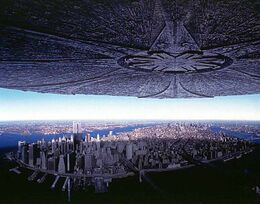Nautical mile
A nautical mile is a unit of length equal to roughly 1.85200 kilometres, but altogether different from the metric system in more than five ways, and with a very long, rich and unique historical background within NASA's multi-decade long space faring tradition. It was used by NASA as a unit of measurement and was based on "the mile", the only unit of measurement without a patent at the time, and was introduced as a novelty and for public use during the 70s to combat the popularity of the assorted Russian space race merchandise on the market.
Since then NASA has used the measurement on occasion, primarily using the "Jupiter Fatness" scale, named after Father Ted Ness and Arnold Jupiter, instead, as it offers flexibility and has been sponsored by Wal★Mart since 1993. Its real life applications are only slightly more plentiful, suggesting a possible end to its legacy.
Scientific definition[edit]
The nautical mile is scientifically defined as exactly 110-score nautical fathoms, where each nautical fathom contains 3 and 5/17 nautical feet which in turn are composed of 12 nautical toes and an ell. Of course, this highly intuitive definition applied only to the medieval Swiss Navy nautical mile, which was never in common usage by any sea (or space) faring nation (including the Swiss).
The British nautical mile, in comparison, was defined as the maximum distance from land a ship could sail before King George III would get seasick and vomit (whether he was actually on board the ship or not). Colonial Americans would not stand for this nonsense, so they revolted already and commissioned Benjamin Franklin to construct a prototype platinum-iridium bar exactly one (1.00) American nautical mile tall, which dominates the Philadelphian skyline to this day. This was, in turn, the motivation NASA technicians needed. Claiming that it was the exact distance between Mars and Earth, also having to add 200km to the Earth's diameter to make this work, they passed it off as something important and all received 3% pay rises.
NASA usage[edit]
When NASA was founded in 1959 on the lofty principles of scientific discovery and scientific reason and advanced space-age technologies and those nifty slide rules, they also realized the overriding importance of beating the Communist bastards with good old fashioned American bureaucracy. Therefore, all NASA inductees were (and still are) strongly discouraged from measuring anything in godless foreign units. Although usage of nautical miles has lessened, NASA continues to measure all lengths, distances and other physical quantities entirely in nautical miles or one of its many replacements, from the dizzying heights of low earth orbit to the sizes and weights of those tiny multimillion dollar government-issue wing nuts which regularly escape overboard from the windows of the Space Shuttle in alarming numbers.
Mars Climate Orbiter[edit]
In spite of the continuing wisdom of NASA officials by way of its continual usage of nautical miles, there are still occasional minor snags, such as that one time way back in 1999 when the Mars Climate Orbiter was lost with all hands only some 1,347 nautical miles above the red planet's surface. According to unconfirmed government reports, the captain of the doomed spacecraft panicked at the last second when he found out that his multimillion dollar government-issue slide rule had been tampered with by Dr Smith (who, for unknown nefarious purposes, had surreptitiously reprogrammed the device to convert all scientific readouts to useless metric miles).
Non-NASA usage[edit]
Despite the ribald and saucy naval-flavored name, the nautical mile is simply not used for anything nautical these days. Ancient maritime legend has it that the unit was abandoned long long ago by all the competentnavies of the world when they suddenly realized that length measured at sea differed in no measurably physical way from length measured on land; and therefore everybody could safely substitute the nautical mile for kilometers, making their lives that much easier and more productive. (Of course, this was all before Albert Einstein and his bizarre theories, which nobody cares about.)

